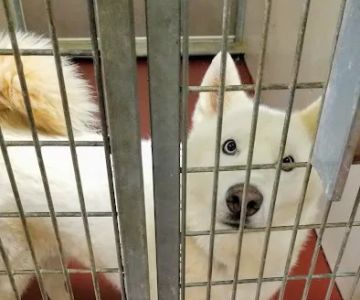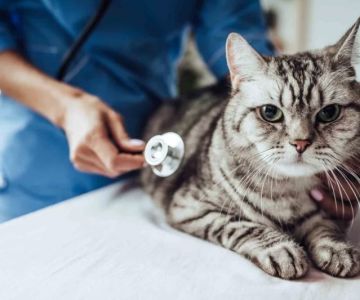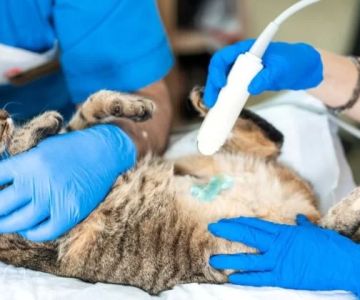Cat Overgrooming: Causes, Stress, and Health Issues
As a pet owner, you may have noticed your cat grooming excessively, which is often seen as a sign of cleanliness and self-care. However, when overgrooming becomes a habit, it can indicate underlying health or behavioral problems. Cat overgrooming is a complex issue that can be caused by stress, health concerns, or a combination of both. In this article, we’ll explore the causes of overgrooming in cats, its effects on their health, and what you can do to help your furry friend.
1. What is Overgrooming in Cats?
Overgrooming refers to when a cat excessively licks, scratches, or bites at its fur, often to the point of causing hair loss, sores, or bald patches. Cats naturally groom themselves to keep their coats clean and free of parasites. However, when this behavior becomes excessive, it may signal that something is wrong.
While grooming is a normal part of a cat's routine, it becomes problematic when it is done to the point of injury or when the cat begins to focus on specific areas, leading to visible damage. Overgrooming can affect a cat's fur quality, skin health, and emotional well-being.

845 W Ridge Rd, Gainesville, GA 30501, USA
See Details2. Causes of Cat Overgrooming
Overgrooming in cats can have multiple causes, ranging from psychological stress to physical health issues. Let’s break down some of the most common causes:
1. Stress and Anxiety
One of the most common reasons for overgrooming is stress or anxiety. Cats are highly sensitive creatures, and changes in their environment can cause them to become anxious. New additions to the household (like a new pet or family member), moving to a new home, or changes in daily routines can all trigger stress in cats. In response, cats may turn to excessive grooming as a way to self-soothe.
For example, if you’ve recently moved to a new home and your cat has started licking or scratching more than usual, stress could be the culprit. Cats often use grooming as a coping mechanism to calm themselves during stressful times.
2. Allergies
Allergic reactions can also lead to overgrooming in cats. Environmental allergens like pollen, dust mites, or certain foods can cause itching, which leads to excessive grooming. If your cat is licking a specific area excessively, it might be reacting to something it is allergic to, such as a particular food or a substance in its environment.
3. Fleas or Parasites
Fleas and other external parasites are another common cause of overgrooming. The constant itching caused by flea bites can prompt a cat to groom excessively in an attempt to relieve the irritation. If your cat’s grooming behavior is accompanied by visible flea dirt or biting at its tail or back, it may be suffering from a flea infestation.
4. Pain or Discomfort
Sometimes, cats overgroom due to pain or discomfort. If a cat has a sore spot or injury, it may lick or bite at the area to alleviate the discomfort. Conditions such as arthritis, dental pain, or gastrointestinal issues can lead cats to focus their grooming efforts on particular areas of their body.
5. Boredom
Boredom is another potential cause of overgrooming, especially in indoor cats that lack stimulation. Without proper mental and physical stimulation, cats may develop compulsive behaviors, such as excessive grooming, to occupy their time.
3. Effects of Overgrooming on Your Cat’s Health
While overgrooming may seem like a harmless behavior, it can have serious effects on your cat’s health. Here are some of the potential health risks:
- Hair Loss: Excessive grooming can lead to bald spots or thinning fur, which can affect your cat’s appearance and well-being.
- Skin Irritation and Infection: Constant licking and scratching can cause skin irritation, sores, or even infections, especially if the skin becomes broken.
- Behavioral Issues: Overgrooming may become a compulsive behavior, which is difficult to stop without addressing the root cause of the stress or anxiety.
- Impact on Physical Health: If the overgrooming is linked to a health issue like allergies or parasites, it can exacerbate the underlying problem, making it harder to treat over time.
4. How to Address and Prevent Overgrooming
If you notice your cat is overgrooming, it’s important to address the issue quickly to prevent further health problems. Here are some steps you can take:
1. Consult Your Veterinarian
If overgrooming persists, the first step is to take your cat to the vet for a thorough check-up. Your vet will be able to rule out physical health issues such as allergies, infections, or parasites. They may recommend medications, special diets, or other treatments based on the diagnosis.
2. Provide a Stress-Free Environment
Reducing stress is essential for managing overgrooming caused by anxiety. Make sure your cat has a quiet, safe space where it can retreat to when feeling overwhelmed. If there have been changes in your home, try to re-establish a predictable routine to provide a sense of security. You can also use pheromone diffusers or sprays, which have been shown to help calm stressed cats.
3. Keep Your Cat Entertained
Ensure that your cat has plenty of toys and activities to keep them mentally stimulated. Interactive toys, puzzle feeders, and regular playtime can help reduce boredom and prevent compulsive behaviors like overgrooming. For cats that are primarily indoors, creating an enriched environment with climbing trees, scratching posts, and window perches can provide much-needed stimulation.
4. Flea and Parasite Control
If fleas are the cause of your cat’s overgrooming, it’s important to use flea prevention treatments. Talk to your vet about the best flea control options, including topical treatments, oral medications, or flea collars. Regularly cleaning your cat’s bedding and vacuuming your home can also help reduce the risk of a flea infestation.
5. Real-Life Example: A Cat’s Journey to Recovery
One cat owner, Sarah, shared her experience of dealing with her cat’s overgrooming. Her cat, Luna, had started excessively licking and pulling out her fur. After a trip to the vet, Sarah discovered that Luna was suffering from a flea infestation that was causing her to itch incessantly. After starting flea treatments and implementing a more consistent grooming routine, Luna’s overgrooming significantly decreased, and her coat grew back healthy and full. Sarah also began providing Luna with more toys and climbing spaces to keep her engaged, which helped reduce her stress levels.
Sarah’s story is a great example of how identifying the cause of overgrooming and taking appropriate steps can lead to a positive outcome for both the cat and the owner.
6. How Hidden Brook Veterinary Can Help Your Cat
If your cat is suffering from overgrooming, don’t hesitate to reach out to Hidden Brook Veterinary. Our experienced veterinarians can help diagnose the underlying causes of overgrooming and provide effective treatments to ensure your cat’s health and happiness. We offer comprehensive care and advice to address both physical and behavioral issues.
Visit Hidden Brook Veterinary today for more information on how we can help your cat lead a healthier, stress-free life.










